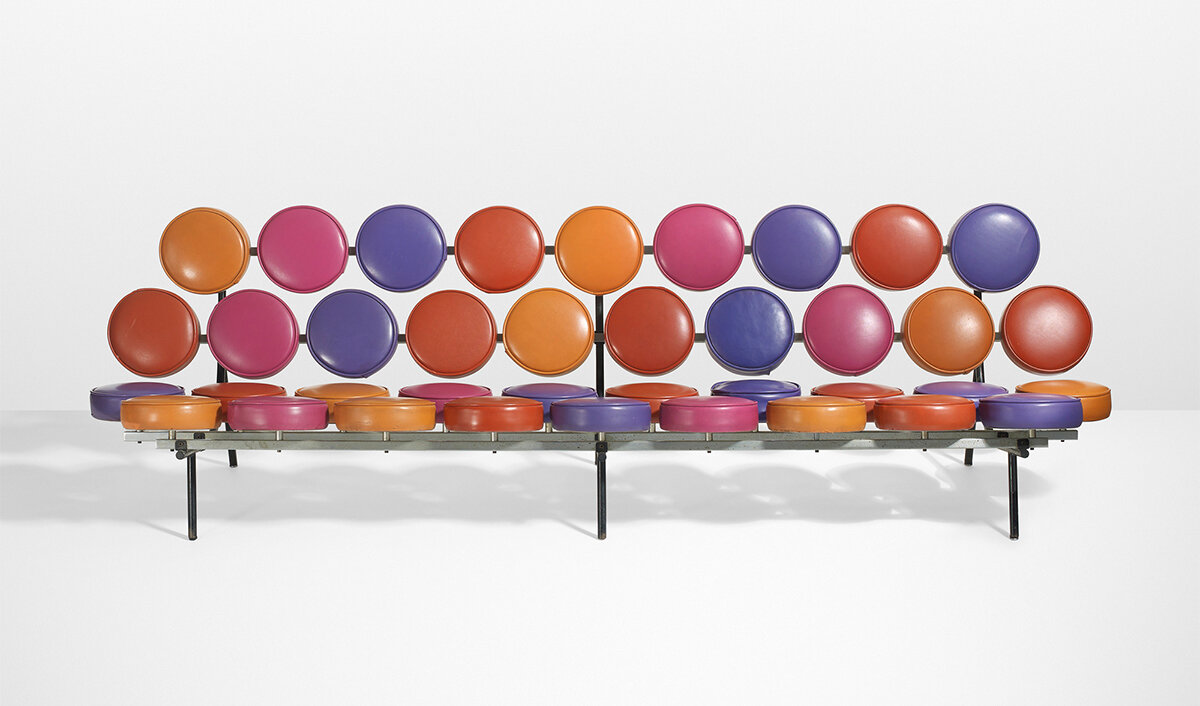570
570
Herman Miller
USA, 1956 / 1960
Girard naugahyde, enameled steel, brushed chrome-plated steel 31 h × 52 w × 30 d in (79 × 132 × 76 cm)
USA, 1956 / 1960
Girard naugahyde, enameled steel, brushed chrome-plated steel 31 h × 52 w × 30 d in (79 × 132 × 76 cm)
estimate: $9,000–12,000
result: $15,000
follow artist
Upholstery manufacturer's label to underside ‘Herman Miller Inc. New York NY, Delivery Date: 6/10/60, 2789 5670 Marsh Sofa’.
provenance: Private Collection, California
literature: George Nelson: Architect, Writer, Designer, Teacher, von Vegesack and Eisenbrand, pg. 267


























 (344x500)_1557412734 copy_1583191339_1614972760.png)




